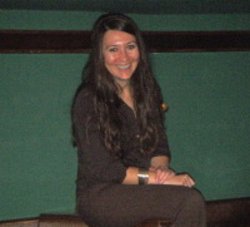Banu Bargu
Assistent professor i Statskundskab ved The New School, New York.
Banu Bargu er ph.d. fra Cornell University. Hendes afhandling Martyrs of Hunger: Sovereignty in the Age of Sacrifice blev tildelt Janice N. & Milton J. Esman prisen for bedste afhandling. Hendes forskningsinteresser inkluderer klassisk og moderne politisk teori, kritisk teori, statsteori, suverænitet, anarkisme, politisk økonomi, politik i mellemøsten, moderne former for politisk modtand og revolution.
For tiden arbejder hun på et projekt, der undersøger konsekvenserne af moderne former for politisk selvopofrelse (sultestrejke, selvmordsbomber, selvantændelse) for politisk teori. Ikke mindst i forhold til spørgsmål om suverænitet, politisk orden og vold.
Banu Bargu har publiceret flere artikler i internationale tidsskrifter og er i færd med at lægge sidste hånd på et bogprojekt med titlen Human Weapons: Biopolitics and the Death Fast.
Abstract:
In recent decades, we have witnessed the emergence of new forms of warfare in which the human body has been utilized as a novel and lethal weapon. The performance of self-destructive violence, especially in its more aggressive forms directed at the enemy, has gathered much scholarly attention. Suicide attackers have become symbolic (if dystopic) figures of this new warfare, raging across various troubled geographies, not distinguishing between combatants and noncombatants, and drawing upon new and increasingly theologized forms of identification and allegiance. My purpose in this paper is to draw attention to the inverse figure of the “human weapon”; namely, the “human shield.” This figure is the exemplar of a similarly biopoliticized utilization of the body in warfare; however, its purpose is not to destroy but to protect others. The human shield suggests the possibility of asserting simple, unarmed existence, with all of its sacrificial potential, in order to stage a political intervention against war itself. The human shield (similar to the human weapon) is a potent political figure that utilizes the plenitude of “mere life,” but sets this potential to work for contrasting aims. My paper attempts to unpack and explore this figure of the human shield, drawing upon contemporary theories of biopolitics and resistance.
